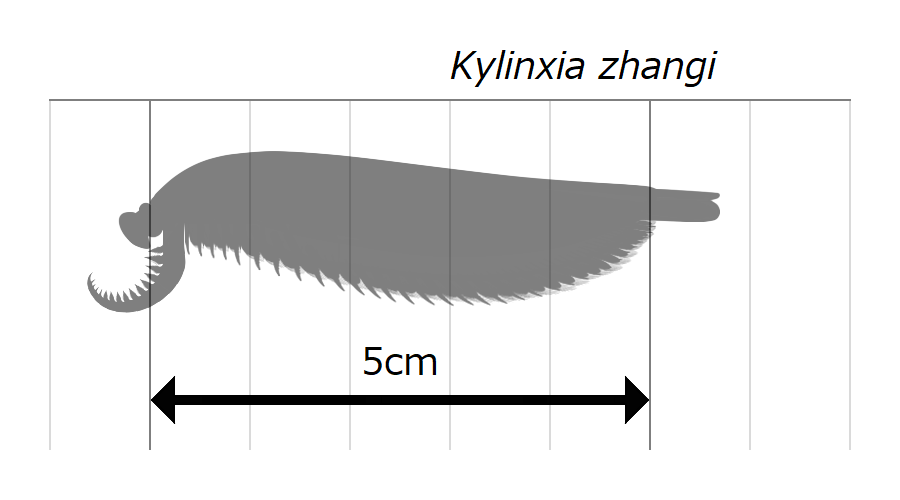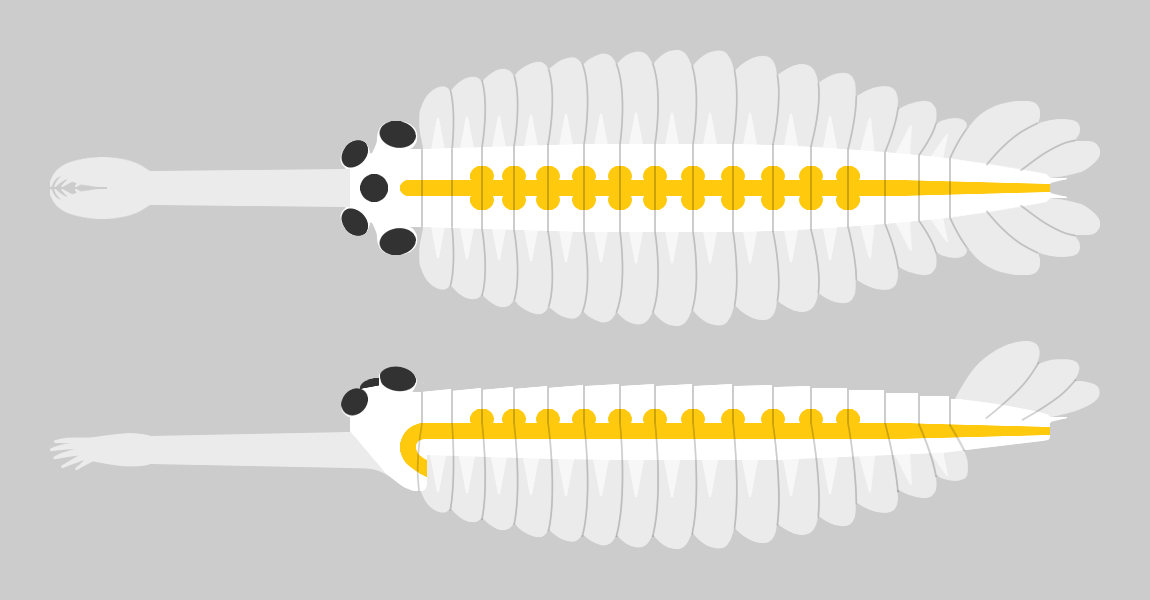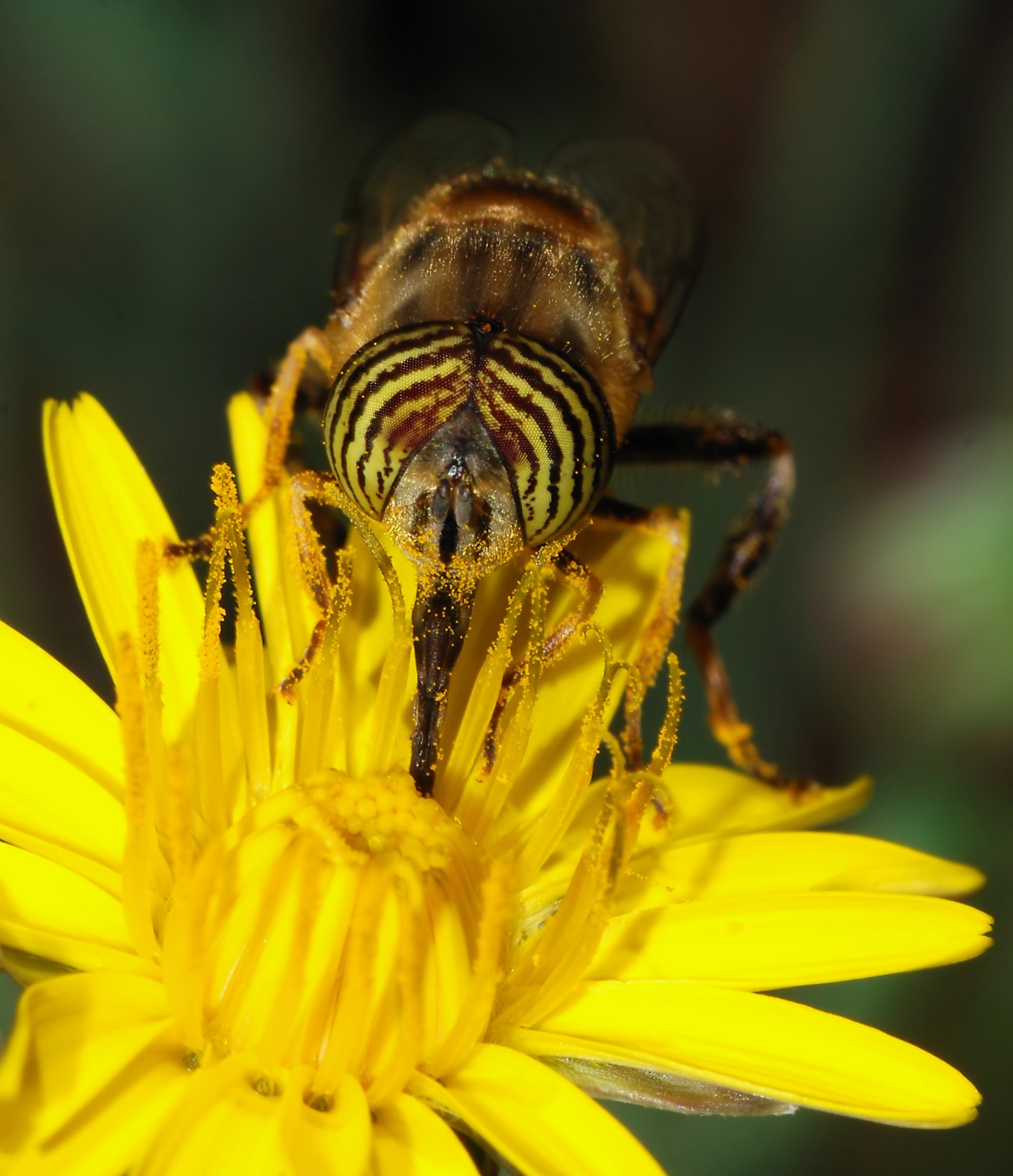|
Kylinxia
''Kylinxia'' is a genus of extinct arthropod described in 2020. It was described from six specimens discovered in Yu'anshan Formation (Maotianshan Shales) in southern China. The specimens are assigned to one species ''Kylinxia zhangi.'' Dated to 518 million years, the fossils falls under the Cambrian period. Announcing the discovery on 4 November 2020 at a press conference, Zeng Han of the Nanjing Institute of Geology and Paleontology, said that the animal "bridges the evolutionary gap from ''Anomalocaris'' to true arthropods and forms a key ‘ missing link’ in the origin of arthropods," which was "predicted by Darwin’s evolutionary theory." The same day the formal description was published in ''Nature''. Discovery ''Kylinxia zhangi'' was discovered among the Maotianshan Shales from Yu'anshan Formation at Yunnan in southern China in 2019. Zeng Han, Zhao Fangchen, and Huang Diying of the Nanjing Institute of Geology and Palaeontology, Chinese Academy of Sciences, made the ... [...More Info...] [...Related Items...] OR: [Wikipedia] [Google] [Baidu] |
Arthropoda
Arthropods ( ) are invertebrates in the phylum Arthropoda. They possess an exoskeleton with a cuticle made of chitin, often mineralised with calcium carbonate, a body with differentiated ( metameric) segments, and paired jointed appendages. In order to keep growing, they must go through stages of moulting, a process by which they shed their exoskeleton to reveal a new one. They form an extremely diverse group of up to ten million species. Haemolymph is the analogue of blood for most arthropods. An arthropod has an open circulatory system, with a body cavity called a haemocoel through which haemolymph circulates to the interior organs. Like their exteriors, the internal organs of arthropods are generally built of repeated segments. They have ladder-like nervous systems, with paired ventral nerve cords running through all segments and forming paired ganglia in each segment. Their heads are formed by fusion of varying numbers of segments, and their brains are formed by fu ... [...More Info...] [...Related Items...] OR: [Wikipedia] [Google] [Baidu] |
Arthropod
Arthropods ( ) are invertebrates in the phylum Arthropoda. They possess an arthropod exoskeleton, exoskeleton with a cuticle made of chitin, often Mineralization (biology), mineralised with calcium carbonate, a body with differentiated (Metamerism (biology), metameric) Segmentation (biology), segments, and paired jointed appendages. In order to keep growing, they must go through stages of moulting, a process by which they shed their exoskeleton to reveal a new one. They form an extremely diverse group of up to ten million species. Haemolymph is the analogue of blood for most arthropods. An arthropod has an open circulatory system, with a body cavity called a haemocoel through which haemolymph circulates to the interior Organ (anatomy), organs. Like their exteriors, the internal organs of arthropods are generally built of repeated segments. They have ladder-like nervous systems, with paired Anatomical terms of location#Dorsal and ventral, ventral Ventral nerve cord, nerve cord ... [...More Info...] [...Related Items...] OR: [Wikipedia] [Google] [Baidu] |
Hymenocarina
Hymenocarina is an Order (biology), order of extinct marine arthropods known from the Cambrian. They possess bivalved carapaces, typically with exposed posteriors. Members of the group are morphologically diverse and had a variety of ecologies, including as filter feeders and as predators. Recent research has generally considered them to be stem or crown group members of Mandibulata, due to the presence of Mandible (arthropod mouthpart), mandibles in well-preserved species. Taxonomy Hymenocarines are characterized by the combination of the following characters: bivalved, convex carapace covering Cephalothorax, cephalothoracic (combined head and thorax) region; cephalothorax bearing multisegmented antennae (though as an exception antennae are absent in ''Odaraia'') and rounded Mandible (arthropod mouthpart), mandibles and likely Maxilla (arthropod mouthpart), maxillae, post maxillae limbs with spiny, subdivided basis and Arthropod leg, endopods (lower, leg-like parts) with well-d ... [...More Info...] [...Related Items...] OR: [Wikipedia] [Google] [Baidu] |
Radiodont
Radiodonta is an extinct order of stem-group arthropods that was successful worldwide during the Cambrian period. Radiodonts are distinguished by their distinctive frontal appendages, which are morphologically diverse and were used for a variety of functions. Radiodonts were among the earliest large predators, but they also included sediment sifters and filter feeders. Some of the most famous species of radiodonts are the Cambrian taxa ''Anomalocaris canadensis'', '' Hurdia victoria'', ''Peytoia nathorsti'', '' Titanokorys gainesi, Cambroraster falcatus'' and '' Amplectobelua symbrachiata''. The later surviving members include the subfamily Aegirocassisinae from the Early Ordovician of Morocco and the Early Devonian member '' Schinderhannes bartelsi'' from Germany. Etymology The name Radiodonta (Latin for ''radius'' "spoke of a wheel" and Greek for ''odoús'' "tooth") refers to the radial arrangement of tooth plates (oral cone) surrounding the mouth, although this feature is su ... [...More Info...] [...Related Items...] OR: [Wikipedia] [Google] [Baidu] |
Opabinia
''Opabinia regalis'' is an extinct, stem group marine arthropod found in the Middle Cambrian Burgess Shale Lagerstätte (505 million years ago) of British Columbia. ''Opabinia'' was a soft-bodied animal, measuring up to 7 cm in body length, and had a segmented trunk with flaps along its sides and a fan-shaped tail. The head showed unusual features: five eyes, a mouth under the head and facing backwards, and a clawed proboscis that most likely passed food to its mouth. ''Opabinia'' lived on the seafloor, using the proboscis to seek out small, soft food. Free abstract at Fewer than twenty good specimens have been described; 3 specimens of ''Opabinia'' are known from the Greater Phyllopod bed, where they constitute less than 0.1% of the community. When the first thorough examination of ''Opabinia'' in 1975 revealed its unusual features, it was thought to be unrelated to any known phylum, or perhaps a relative of arthropod and annelid ancestors. However, later studies since l ... [...More Info...] [...Related Items...] OR: [Wikipedia] [Google] [Baidu] |
20210313 Kylinxia Zhangi Frontalmost Appendage
1 (one, unit, unity) is a number, numeral, and glyph. It is the first and smallest positive integer of the infinite sequence of natural numbers. This fundamental property has led to its unique uses in other fields, ranging from science to sports, where it commonly denotes the first, leading, or top thing in a group. 1 is the unit of counting or measurement, a determiner for singular nouns, and a gender-neutral pronoun. Historically, the representation of 1 evolved from ancient Sumerian and Babylonian symbols to the modern Arabic numeral. In mathematics, 1 is the multiplicative identity, meaning that any number multiplied by 1 equals the same number. 1 is by convention not considered a prime number. In digital technology, 1 represents the "on" state in binary code, the foundation of computing. Philosophically, 1 symbolizes the ultimate reality or source of existence in various traditions. In mathematics The number 1 is the first natural number after 0. Each natural number, ... [...More Info...] [...Related Items...] OR: [Wikipedia] [Google] [Baidu] |
Biramous
The arthropod leg is a form of jointed appendage of arthropods, usually used for walking. Many of the terms used for arthropod leg segments (called podomeres) are of Latin origin, and may be confused with terms for bones: ''coxa'' (meaning hip, : ''coxae''), ''trochanter'', ''femur'' (: ''femora''), ''tibia'' (: ''tibiae''), ''tarsus'' (: ''tarsi''), ''ischium'' (: ''ischia''), ''metatarsus'', ''carpus'', ''dactylus'' (meaning finger), ''patella'' (: ''patellae''). Homologies of leg segments between groups are difficult to prove and are the source of much argument. Some authors posit up to eleven segments per leg for the most recent common ancestor of extant arthropods but modern arthropods have eight or fewer. It has been argued that the ancestral leg need not have been so complex, and that other events, such as successive loss of function of a ''Hox''-gene, could result in parallel gains of leg segments. In arthropods, each of the leg segments articulates with the next seg ... [...More Info...] [...Related Items...] OR: [Wikipedia] [Google] [Baidu] |
Tergite
A ''tergum'' (Latin for "the back"; : ''terga'', associated adjective tergal) is the Anatomical terms of location#Dorsal and ventral, dorsal ('upper') portion of an arthropod segment other than the head. The Anatomical terms of location#Anterior and posterior, anterior edge is called the 'base' and posterior edge is called the 'apex' or 'margin'. A given tergum may be divided into hardened plates or sclerites commonly referred to as tergites. In a Thorax (insect anatomy), thoracic segment, for example, the tergum may be divided into an anterior notum and a posterior Scutellum (insect), scutellum. Lateral extensions of a tergite are known as paranota (Greek for "alongside the back") or ''carinae'' (Latin for "keel"), exemplified by the flat-backed millipedes of the order Polydesmida. Kinorhynchs have tergal and sternal plates too, though seemingly not homologous with those of arthropods. Tergo-tergal is a stridulation, stridulatory mechanism in which fine spines of the abdominal ... [...More Info...] [...Related Items...] OR: [Wikipedia] [Google] [Baidu] |
Ramskoeldia
''Ramskoeldia'' is a genus of amplectobeluid radiodont described in 2018. It was the second genus of radiodont found to possess gnathobase-like structures (abbreviated as GLS) and an atypical oral cone after ''Amplectobelua''. The type species, ''Ramskoeldia platyacantha'', was discovered in the Chengjiang biota of China, the home of numerous radiodontids such as ''Amplectobelua'' and '' Lyrarapax''. Morphology ''Ramskoeldia'' is known only from a few frontal appendages, gnathobase-like structures (GLSs), disarticulated smooth and tuberculated plates interpreted as parts of their oral cones, as well as fragments of body flaps and head carapace complex. The frontal appendage of ''Ramskoeldia'' is composed of 16 podomeres (3 shaft podomeres and 13 distal articulated region podomeres), with endites of podomeres 4 to at least podomere 12 bearing prominent auxiliary spines. The endites of podomere 4 (first podomere of distal articulated region) is the largest compared to other en ... [...More Info...] [...Related Items...] OR: [Wikipedia] [Google] [Baidu] |
Great Appendage
Megacheira ("great hands", also historically great appendage arthropods) is an extinct class of predatory arthropods defined by their possession of spined "great appendages". Their taxonomic position is controversial, with studies either considering them stem-group euarthropods, or stem-group chelicerates. The homology of the great appendages to the cephalic appendages of other arthropods is also controversial. Uncontested members of the group were present in marine environments worldwide from the lower Cambrian to the upper Ordovician. Morphology Megacheirans are defined by their possession of uniramous "great appendages", which are their first pair of head appendages. The first one or two proximalmost segments/ podomeres are spineless (it has been argued that the supposed first of the two proximal podomeres is actually an arthrodial membrane), while the remaining 3–4 more distal podomeres each typically bear a single upward pointing spine attached towards the distal en ... [...More Info...] [...Related Items...] OR: [Wikipedia] [Google] [Baidu] |
Proboscis
A proboscis () is an elongated appendage from the head of an animal, either a vertebrate or an invertebrate. In invertebrates, the term usually refers to tubular arthropod mouthparts, mouthparts used for feeding and sucking. In vertebrates, a proboscis is an elongated nose or snout. Etymology First attested in English in 1609 from Latin , the latinisation (literature), latinisation of the Ancient Greek (), which comes from () 'forth, forward, before' + (), 'to feed, to nourish'. The plural as derived from the Greek is , but in English the plural form ''proboscises'' occurs frequently. Invertebrates The most common usage is to refer to the tubular feeding and sucking organ of certain invertebrates such as insects (e.g., Insect mouthparts#Proboscis, moths, butterflies, and mosquitoes), worms (including Acanthocephala, Nemertea, proboscis worms) and gastropod molluscs. Acanthocephala The Acanthocephala, the thorny-headed worms or spiny-headed worms, are characterized by the pr ... [...More Info...] [...Related Items...] OR: [Wikipedia] [Google] [Baidu] |
Haikoucaris
''Haikoucaris'' is a genus of megacheiran arthropod that contains the single species ''Haikoucaris ercaiensis''. It was discovered in the Cambrian Chengjiang biota of China. Morphology ''Haikoucaris'' measured about 38 mm in body length. The elongated body compose of a semicircular head shield, 13 trunk tergites and presumely a short, spine-like telson. The head possess a pair of unstalked eyes, a pair well-developed great appendages, as well as 3 more appendage pairs of unknown detail. Each of the great appendage consists of a 2-segmented peduncle and a 3-segmented claw. Each of the trunk segment possess a pair of biramus appendages that each comprising a leaf-shaped exopod and a possibly 7-segmented endopod. Paleoecology ''Haikoucaris'' may have been a predator, with its great appendages and exopod suggested to be used for hunting and swimming respectively. Taxonomy Within megacheirans, ''Haikoucaris'' is generally accepted to be a member of the clade Cheiromorpha alongs ... [...More Info...] [...Related Items...] OR: [Wikipedia] [Google] [Baidu] |










